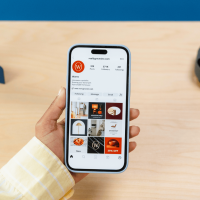The investor‑relations website‑builder software market is projected to climb from US $181.4 million in 2024 to US $621.2 million by 2034, expanding at 13.1 percent a year, Market.us reports. Meanwhile, Adams Street Partners’ latest global investor survey shows that 67 percent of limited partners (LPs) plan to boost private‑market allocations this year, and 88 percent expect the asset class to keep outpacing public markets. In this climate, purpose‑built investor portal software is quickly moving from “nice to have” to operational core.

What Exactly Is an Investor Portal?
An investor portal is a secure, cloud‑based workspace that replaces PDF email blasts and disparate file‑sharing tools with a single destination for fund data, legal documents and real‑time analytics. Authentication controls every visitor, audit trails log every click, and integrations pipe performance figures from fund administrators directly into an LP’s dashboard. Done well, the portal becomes the single source of truth for capital calls, quarterly reports, ESG metrics and even deal‑pipeline teasers.
Why Portals Matter in 2025
Private capital is rebounding. McKinsey & Company reports global private‑equity deal value rose 14 percent to about US $2 trillion in 2024—the third‑highest tally on record. Investor confidence is improving, too: PwC finds one in two professional investors expects economic growth over the next year. Digital habits reinforce those numbers; the wealth‑management software market hit US $5.51 billion in 2024 and is expanding roughly 14 percent annually through 2030 (Grand View Research). LPs are ready to commit more capital—and they want information faster than quarterly PDFs can deliver.
Six Must‑Have Features of a Modern Investor Portal
Treat the portal as infrastructure, not a side project, and it pays back with lower support volume, stronger LP loyalty and faster subscription cycles.
1. Secure document vault and virtual data room
SmartRoom lets investors “access the latest fund documents and historical archives anytime, anywhere,” pairing permission‑based access with robust encryption. A built‑in virtual data room means sponsors avoid paying for a separate diligence platform.
2. Real‑time performance dashboards
Verivend streams live capital‑account balances, diversification charts and distribution waterfalls to browsers and phones. Interactive elements help LPs model timing scenarios as exits cluster and cash flows accelerate.
3. Self‑service reporting and analytics
WealthBlock finds slice‑and‑dice analytics can cut inbound “Can you send me…?” emails by double‑digit percentages. Investors filter by vintage, sector or geography and export Excel excerpts on demand.
4. E‑signatures and workflow automation
Ascendix couples DocuSign templates with smart routing rules so subscription agreements land sequentially in compliance, finance and GP inboxes. Turnaround drops from days to minutes, and every step is time‑stamped for auditors.
5. Granular permissioning and multi‑factor authentication
EY shows how single sign‑on blended with multi‑factor authentication (MFA) can deliver bank‑grade security without friction. Role‑based access ensures auditors, portfolio CFOs and LPs each see only what they need.
6. Engagement tracking and CRM/API hooks
DocSend reminds IR teams that secure portals should double as intelligence engines: heat‑map analytics reveal which KPIs a prospective LP studied longest. Modern APIs push that insight into CRMs like DealCloud, making every touchpoint measurable.
Implementation Road Map
- Audit data quality. Reconcile naming conventions across administrators, portfolio companies and front‑office models before any code is written; dirty data sabotages dashboards.
- Map user journeys. Sketch the daily tasks of controllers, partners, auditors and LP contacts; each group needs its own landing page, menu and notification cadence. Designing a sleek, intuitive investor portal is just like optimizing a landing page—both need to deliver instant clarity and frictionless action. Learn best practices for landing page optimization to maximize engagement from your investors.
- Phase the rollout. Start with one pilot fund, invite a small LP cohort to test‑drive the portal and capture feedback on navigation and load times.
- Automate the plumbing. Use APIs or ETL jobs to pipe transactions from your fund administrator into the portal nightly. Watermark sensitive docs and mandate MFA enrollment.
- Train and iterate. Host webinars, publish how‑to videos and embed contextual tooltips. Usage analytics will surface friction points; refine layout or add integrations in two‑week sprints. Even the best-designed portal needs a human touch. Users benefit from clear guidance, especially when they’re using a new platform for the first time. Offer short tutorial videos that walk through common tasks, provide step-by-step written guides, and make sure help is never more than a click away. Incorporating AI chatbots can enhance user support by providing instant answers to common questions. Tooltips, FAQs, and live office hours can all reduce the friction of onboarding.
Obstacles and Mitigation Tactics
Data inconsistency. Varying chart‑of‑accounts structures can derail reporting. Enforce a canonical data dictionary and schedule quarterly alignment calls with portfolio‑company finance leads.
Cyber threats. Attackers increasingly exploit stolen SaaS credentials. Enforce MFA, adopt zero‑trust network segmentation and commission annual penetration tests. Consider anomaly detection that locks accounts after unusual download bursts.
Adoption apathy. If a portal feels bolted on, investors revert to email. Offer early‑access incentives—such as first look at co‑investment deals—and spotlight power users in quarterly webcasts.
Even with the best intentions, there are always bumps in the road. Sometimes data from different portfolio companies doesn’t line up neatly, especially when they use different systems. To stay ahead of this, build a habit of regular data review calls—maybe quarterly—with finance leads across your portfolio. If investors raise security concerns, be ready with clear, non-technical explanations of your safeguards and even consider bringing in a third-party firm to conduct an annual security audit.
And if user engagement dips, refresh the content, improve the layout, or introduce new features based on direct user feedback. The key is to treat the portal as a living, evolving product—not a one-and-done launch. With ongoing care and attention, it becomes a real asset: a digital extension of your brand that strengthens trust, saves time, and keeps your investors feeling informed and valued.
Future Outlook — Triple‑Digit Growth Ahead
Market.us projects IR‑tech spending to triple by 2034, driven by transparency demands, mobile‑first design and AI‑assisted workflows. McKinsey’s deal‑value momentum signals capital deployment will remain brisk, making real‑time data‑sharing non‑negotiable. Next‑gen portals will embed generative‑AI chatbots that draft quarterly letters or flag valuation anomalies, while zero‑knowledge proofs verify performance end‑to‑end. Vendors blending bank‑grade security with consumer‑grade usability—think biometric logins and drag‑and‑drop KPI builders—will set the pace.
Conclusion
Investor portals are now the connective tissue of private markets, translating complex fund data into on‑demand insight while fortifying trust. GPs that invest early in the six features above will meet rising transparency standards, sharpen operational efficiency and position themselves for the next wave of digitally fluent capital.

Founder Dinis Guarda
IntelligentHQ Your New Business Network.
IntelligentHQ is a Business network and an expert source for finance, capital markets and intelligence for thousands of global business professionals, startups, and companies.
We exist at the point of intersection between technology, social media, finance and innovation.
IntelligentHQ leverages innovation and scale of social digital technology, analytics, news, and distribution to create an unparalleled, full digital medium and social business networks spectrum.
IntelligentHQ is working hard, to become a trusted, and indispensable source of business news and analytics, within financial services and its associated supply chains and ecosystems










